

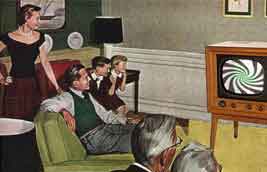
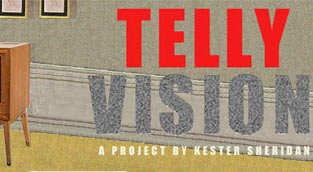
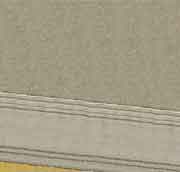
Introduction |
|
|
There is a growing trend in technology for convergence. Modern devices such as mobile phones do not have just one function but many - combining the functionality of a telephone, a camera and an mp3 player all into one device. This trend can also been seen in home entertainment with the convergence of the computer and television into one single entertainment centre. For me this convergence of the television set and the computer provides an interesting opportunity for the artist to truly ‘interrupt live television’, allowing us to apply the techniques developed by video artists to the live medium of television and so interrupt the expectations of the spectator for a medium that is taken so much for granted. In this project I developed the ‘Telly Vision’ application which provides the tools for me as an artist to create such art work which challenges the spectator’s view of the medium. |
|
Output |
|
| The application is divided into five discreet entities or display modes which are controlled by a central configuration suite but which generate five very different types of artwork but which all have the television picture as their source. These I entitled: | |
Aleotoric Alterpiece |
|
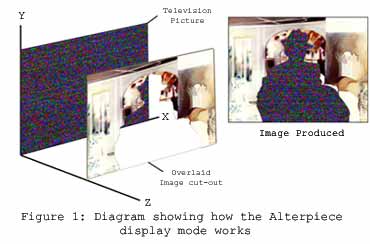 The word Aleatory (or aleatoric) means, "pertaining to luck", and
derives from the Latin word alea, the rolling die. This piece exploits
the principle of randomness through the television channel being changed
randomly on a regular basis either from a selected number of channels
or from the entire channel range. The spectator may begin to see form
in the static of the off-tune channels or associate some meaning in
the juxtaposition of dialogue or images in the ever-changing TV channels.
There is also the opportunity during design time to overlay images
over the top of the television picture. The word Aleatory (or aleatoric) means, "pertaining to luck", and
derives from the Latin word alea, the rolling die. This piece exploits
the principle of randomness through the television channel being changed
randomly on a regular basis either from a selected number of channels
or from the entire channel range. The spectator may begin to see form
in the static of the off-tune channels or associate some meaning in
the juxtaposition of dialogue or images in the ever-changing TV channels.
There is also the opportunity during design time to overlay images
over the top of the television picture. |
|
And they say, there is nothing good on TV (Doodle TV) |
|
  |
|
| Doodles are drawn automatically either all over the screen or on the face of the person on the TV using face detection. This produces some interesting effects especially when watching a 24-hour news channel as news has a certain gravitas but it is difficult to take something seriously when there is pair of comedy glasses or moustache drawn on the newscaster. There is also the opportunity for 'happy accidents' to occur such as if the computer was to draw a Hitler moustache on George Bush then the spectator may read this as a political statement but the computer has no comprehension of who George Bush is so this would happen purely by chance. | |
Moving Image as Collage |
|
 |
|
| The term collage was usually defined as the technique of incorporating fragments of commercially printed-paper into artistic compositions. I thought it would be interesting to extend this concept to moving images. In this piece, up to 4 separate TV pictures are arranged on the screen in the form of a collage allowing the pictures to overlap. It also introduces an element of chance that there maybe some correspondence in the images shown on the separate television channels. | |
Quick, Quick, Slow |
|
| The spectator is confronted by a TV moving image that is constantly in a state of flux either slowing down or speeding up. This is a recorded clip from TV, for example recorded 30 minutes previously and 30 minutes in duration. This clip represents memory being from the past. By playing the clip at different rates, it is similar to our own perception of memory where certain things seem more vivid that others, for instance if we meet someone from our past then it seems the past is catching up with the present or people often say that 'time flies by when you are having fun' or 'time is dragging'. However this obviously cannot happen, and is also the case in this piece that although the clip is speeded up and slowed down overall it is still only 30 minutes hence the past remains in the past. | |
Re-contextualising Subtitles |
|
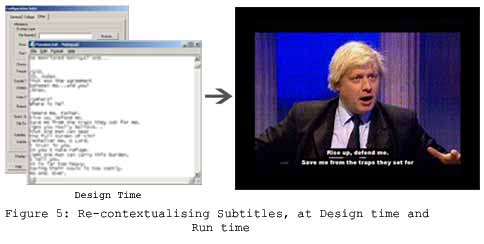 |
|
| Without audio on the television and with the subtitles on, there is a reliance on the subtitles to aid the understanding, meaning and context of the images being shown on the screen, however by adding subtitles which have no relation to the images on the screen then the images are re-contextualised and consequently their meaning is changed. There is a chance that the spectator may draw some unexpected meaning from associating the images with the text. | |
Further Information |
|
| Further information is available in my thesis (click here to download). | |